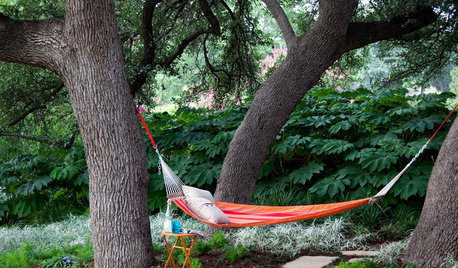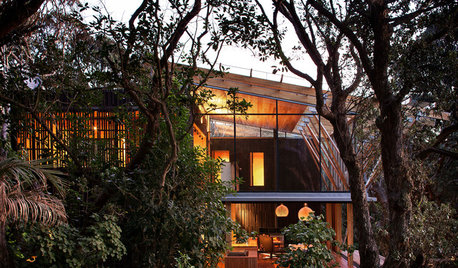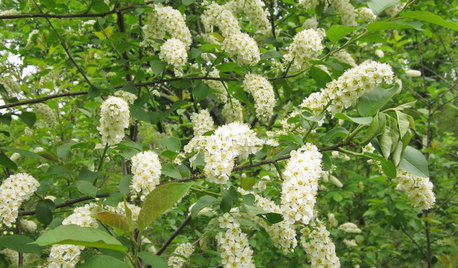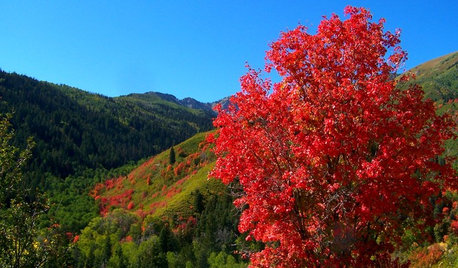Native Trees vs. Non-Native Trees
greenthumbzdude
11 years ago
Featured Answer
Comments (75)
katob Z6ish, NE Pa
11 years agoterrene
11 years agoRelated Discussions
How To Kill A Tree? (non-native)
Comments (9)Tordon RTU (ready to use) is not regulated. You can buy it at any farm store. It's a great tree killer. I use the 'hack and squirt' method.... Hatchet...hack downward...ring entire tree (no gaps is best)...a couple hacks into the membrane at each position around the tree is sufficient. Then I take a quart squirt bottle and shoot just the right amount into the cuts (enough so it runs into the downward hacks and makes it's way into the tree. Also Works well on Autumn Olive, etc. Good luck! Bob I have NEVER have product leaching but I do not squirt trees I want to keep...just Locust, Elm etc. I have no problem killing HUGE Locust trees....dead in 3 weeks. Impressive....See MoreWould hybridization occur naturally? (native & non-native; e/w)
Comments (8)To take out the location-loaded terms 'native' and 'cultivated', I think what you're trying to ask is, "can hybrids occur between species from different continents"; the answer is yes, provided the species are closely related enough. There are plenty of examples. In Prunus, the hybrid between P. avium (Europe) and P. emarginata (N America) is known, recently named Prunus à pugetensis. I'd doubt that P. serotina could cross with P. avium though, as they are in different sections of the genus (sect. Padus, and sect. Cerasus, respectively). Resin...See Morewhat non native trees are you planting that are cool?
Comments (16)Hi Have a couple on the above lists as well as a white form of the Royal poinciana or at least reputed to be has not flowered yet. Schizolobium parahyba, jury still out if it's "cool"lol. has grown more in the last year than the previous 5. Catches lizards in a sticky resin, which I can find no info about. Throws entire branches off at once with a loud popping sound.lol Breaks in 30 MPH winds. Thinking of removing it as can't imagine a tree that size in a hurricane . was hoping to see at least one flower before then. laurroxie Ever got the C roxburghii to flower?? Both it and th Schizy seem to have made it through the cold but look a bit ragged. I think both are "spring" flowers?? gary...See MoreConfirmation of non native tree
Comments (14)Ailanthus altissima, Tree of Heaven or more aptly Ghetto Palm. If you think that's oddly shaped you should see the well-known pic of the mature tree that sprouted in the roof gutter, followed down the downspout and rooted into the ground. The best treatment that I know of is basal herbicide application. Wound the tree at the base, paint with full strength herbicide and allow the whole tree including roots to die. I do this in September, maybe it will work now, not sure....See Moregreenthumbzdude
11 years agoakamainegrower
11 years agojimbobfeeny
11 years agoIris GW
11 years agolcadem
11 years agoflora_uk
11 years agoIris GW
11 years agowisconsitom
11 years agoHuggorm
11 years agogreenthumbzdude
11 years agowisconsitom
11 years agoIris GW
11 years agolcadem
11 years agohairmetal4ever
11 years agogreenthumbzdude
11 years agoIris GW
11 years agoIris GW
11 years agowisconsitom
11 years agoIris GW
11 years agodrrich2
11 years agoscotjute Z8
11 years agowisconsitom
11 years agoIris GW
11 years agoterrene
11 years agowisconsitom
11 years agorosefolly
11 years agolcadem
11 years agoHuggorm
11 years agojimbobfeeny
11 years agoterrene
11 years agoHuggorm
11 years agoIris GW
11 years agobengz6westmd
11 years agofamartin
11 years agojimbobfeeny
11 years agoHuggorm
11 years agowisconsitom
11 years agogreenthumbzdude
11 years agoterrene
11 years agoterrene
11 years agoHuggorm
11 years agoIris GW
11 years agolkz5ia
11 years agobengz6westmd
11 years agoIris GW
11 years agowisconsitom
11 years agogreenthumbzdude
11 years agoUser
11 years ago
Related Stories

GARDENING GUIDES8 Essential Native Shade Trees for the U.S. Southeast
These beauties provide cool shade in the summer and easily withstand the heat and humidity of the South
Full Story
LANDSCAPE DESIGNFlood-Tolerant Native Trees for Soggy Soil
Swampy sites, floodplains, even standing water ... if you've got a soggy landscape, these trees are for you
Full Story
GARDENING GUIDES10 Top California Native Plants, Trees and Grasses
Enjoy a fuss-free, water-wise garden in the Golden State by growing plants naturally in tune with the climate and wildlife
Full Story
CONTEMPORARY HOMESHouzz Tour: Native Trees Are Part of This Home’s Design
A coastal New Zealand house is built to blend into a surrounding forest of pohutukawa trees
Full Story
GARDENING GUIDES15 Native Flowers That Feed Native Bees
These perennials offer superfood to hundreds of bees and are gorgeous in their own right
Full Story
TREESGreat Design Plant: Southern Magnolia, Iconic U.S. Native
Massive, fragrant blooms and deep green leaves set Magnolia grandiflora apart from other large shade trees
Full Story
TREESNative Plant Alternatives to Invasive Common Buckthorn
Learn how to identify and control this aggressive plant, and what to grow in its place
Full Story
GARDENING FOR BUTTERFLIES3 Ways Native Plants Make Gardening So Much Better
You probably know about the lower maintenance. But native plants' other benefits go far beyond a little less watering and weeding
Full Story
GARDENING GUIDESGarden-Friendly Native Alternatives to Overplanted Exotics
There are lots of gorgeous, wildlife-friendly native plants ready to make an appearance in your garden
Full Story
GARDENING GUIDESBigtooth Maple, the West’s Native Sugar Maple
Plant Acer grandidentatum for cool shade, brilliant autumn colors and songbird habitat
Full Story




Huggorm